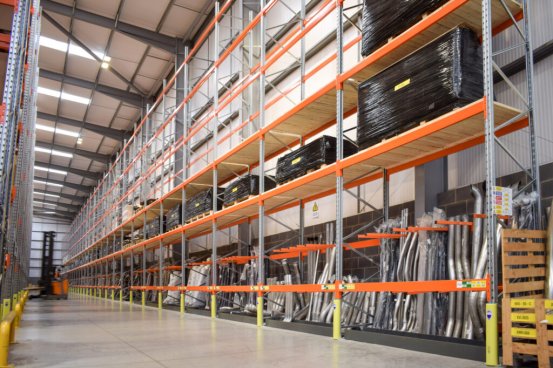Increasing Warehouse Efficiency with Advanced Racking Systems
Optimized storage is a cornerstone of smooth warehouse operations. Modern racking systems provide a structured way to organize goods, making better use of space while supporting faster workflows and easier access.
Optimized storage is a cornerstone of smooth warehouse operations. Modern racking systems provide a structured way to organize goods, making better use of space while supporting faster workflows and easier access.

Understanding Warehouse Racking
Warehouse racking refers to engineered frameworks built to hold palletized or loose items in a safe, organized manner. These structures typically consist of upright frames and horizontal beams that form multiple storage levels. By creating vertical storage capacity, racking solutions allow warehouses to handle more inventory efficiently while ensuring products are easy to locate and retrieve.
Popular Types of Warehouse Racking
Different facilities require different setups depending on product volume, size, and movement speed. Common options include:
Selective Racking – The standard system offering direct access to each pallet, making picking fast and simple.
Drive-In/Drive-Through Racking – Designed for high-density storage, allowing forklifts to move directly into lanes.
Push-Back Racking – Uses sliding carts on rails, offering compact storage without losing accessibility.
Pallet Flow Racking – Employs gravity rollers so stock automatically moves forward, perfect for high-turnover items.
Cantilever Racking – Provides open-front storage for bulky or irregularly shaped materials like timber or pipes.
Double-Deep Racking – Stores two pallets per lane to increase density, requiring reach trucks for access.
How Racking Systems Boost Performance
By making use of vertical height, racking systems expand storage without requiring additional floor space. Organized layouts also speed up product picking, minimize handling delays, and enhance overall workflow. Moreover, sturdy racking reduces the likelihood of product damage, protecting inventory and lowering replacement costs.
Key Advantages of Racking Solutions
Custom Fit – Configurable to match warehouse size and storage needs.
Adaptability – Adjustable designs accommodate varied product dimensions.
Space Optimization – Unlocks both floor and overhead storage potential.
Safety Improvement – Supports safer handling and reduces accident risks.
Accessibility – Streamlines order picking and product replenishment.
Keeping Safety a Priority
Safe operation is essential for any racking system. Best practices include:
Routine Inspections – Regularly check racks for damage or wear.
Load Management – Follow weight guidelines to prevent failures.
Employee Training – Teach correct loading and unloading methods.
Clear Pathways – Maintain open aisles for safe forklift and worker movement.
Preventive Maintenance – Carry out scheduled upkeep to avoid costly breakdowns.
Choosing the Right Racking Setup
The best racking system depends on warehouse layout, product types, and growth projections. Companies should evaluate these factors carefully and consult experts to ensure they select a solution that supports efficiency, safety, and scalability.
Final Thoughts
Investing in warehouse racking isn’t just about storage—it’s a strategic move to optimize space, improve workflow, and safeguard inventory. With the right system in place, businesses can cut costs, enhance productivity, and build a strong foundation for long-term operational success.

